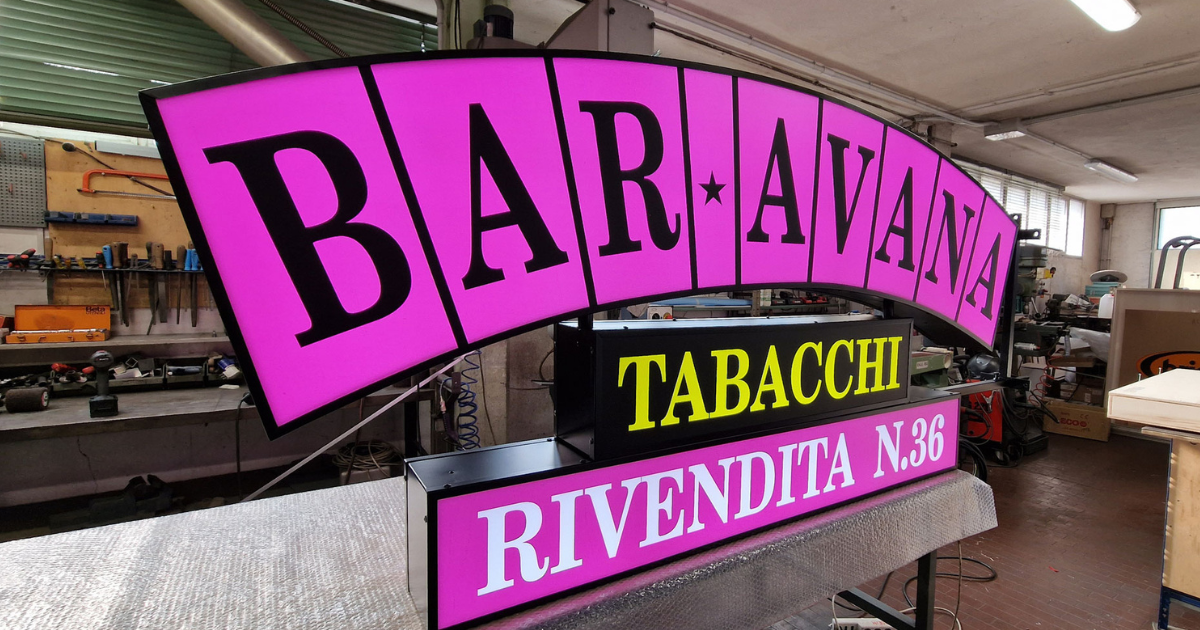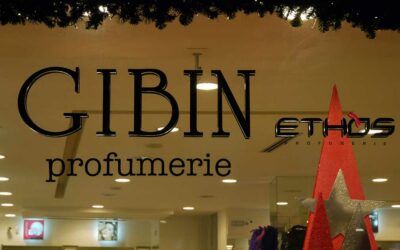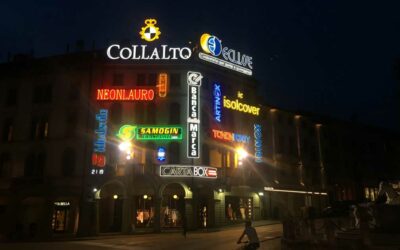2 December 2024

Illuminated signs are living symbols of an era, representing the historical and cultural identity of the cities and businesses they belong to. When the passage of time threatens their integrity, conservative restoration becomes the only tool capable of preserving their authenticity and beauty, keeping them vibrant in the urban landscape.
The restoration of vintage signs, in particular, plays a crucial role in conserving visual elements that tell stories and traditions while also ensuring the extension of their functional lifespan. In this article, we will delve into the main restoration processes, the importance of preserving these luminous works of art, and how successful case studies demonstrate the effectiveness of these techniques, bringing past symbols back to life.
Index:
- What Is the Conservative Restoration of Illuminated Signs?
- The Importance of Preserving Vintage Signs
- Restoration Processes for Illuminated Signs
• Evaluation and Diagnosis
• Documentation
• Disassembly
• Cleaning
• Sign Repairs
• Renewal of Lighting Systems
• Reassembly
• Finishing and Protection- Benefits of Conservative Restoration
- Success Stories in Sign Restoration
- Conclusion
- What Is the Conservative Restoration of Illuminated Signs?
The conservative restoration of illuminated signs is a delicate and highly specialized process aimed at preserving their original appearance while restoring functionality without altering their historical characteristics. This type of intervention allows signs to be recovered without significant design changes, focusing on the repair and maintenance of components to ensure proper operation while safeguarding their cultural, visual, and historical value.
- The Importance of Preserving Vintage Signs
Vintage signs are much more than simple functional objects. Each sign tells a story, which is why their preservation is so important. Historic signs help define the visual identity of a city, and if left to deteriorate, we risk losing a unique visual heritage.
Conservative restoration is crucial to maintain the integrity of these works of art. It not only restores their original visual appearance but also preserves the atmosphere and context in which they are placed, contributing to the maintenance of a tangible connection with the past.
- Restoration Processes of Illuminated Signs
The conservative restoration of illuminated signs requires careful planning and the application of specific techniques. Each phase of the process is designed to ensure the preservation and restoration of the original value, starting from assessment and diagnosis to final protection.
⦁ Evaluation and Diagnosis: The first step in the restoration process is a thorough assessment of the sign’s condition. Various factors, such as structure, materials, lighting type, and signs of wear or weather damage, are analyzed. This phase defines the most suitable intervention strategy.
⦁ Documentation: After evaluation, detailed documentation of the current condition is made, recording location, size, design, and aesthetic condition. Documentation is essential for tracing the sign’s history and ensuring that any intervention does not alter its authenticity.
⦁ Disassembly: Following the diagnosis, some components may need to be disassembled for repair or replacement. Each element is handled with great care to avoid damage and to ensure proper reintegration once restored.
⦁ Cleaning: Cleaning is one of the most critical steps in the restoration process. Using gentle techniques, dirt, dust, and rust are removed, restoring the shine to the surface without compromising the original materials. This is a fundamental step in preparing the sign for the subsequent phases.
⦁ Sign Repair: Repairs are necessary when a part of the sign is damaged or no longer functions. This involves working on broken components, both structural and lighting-related. If the lighting system is not working, neon tubes or electrical circuits are restored or replaced.
⦁ Renewal of Lighting Systems: Many signs require their lighting systems to be updated or replaced. This may include renewing the gas in neon tubes, replacing light bulbs, or overhauling circuits to ensure optimal illumination. The goal is to maintain the quality of light and functionality without altering the original appearance.
⦁ Reassembly: Once repairs are completed, the next step is reassembling the disassembled parts. Each component is carefully reintegrated, respecting the original order and position to maintain both aesthetic and functional integrity.
⦁ Finishing and Protection: The restoration concludes with the application of protective finishes. These finishes help preserve the sign from adverse weather conditions and damage caused by time, ensuring long-term durability.
- Benefits of Conservative Restoration
- Success Stories in Sign Restoration
The restoration of illuminated signs has proven its value in numerous recovery projects within historical contexts. An interesting example is the many signs that adorn the historic centers of cities, restoring their original appearance while adapting them to modern regulations. These interventions not only preserved the visual identity but also revitalized urban areas, making the landscape more attractive and charming.
Other success stories involve the restoration of historic signs in major European cities, where the work has restored their unique character without altering their vintage style. Thanks to the intervention of skilled restorers, these signs shine once again, drawing the attention of passersby and tourists and reaffirming the historic significance of the location.
- Conclusion
The conservation restoration of illuminated signs is an art that combines tradition and innovation, preserving objects that tell stories and have a significant impact on our urban landscape. Through specialized techniques and a careful respect for authenticity, each restoration becomes a testament to the care and love for historical heritage. At Neonlauro, we are proud to give new life to illuminated signs. If you would like more information, feel free to get in touch. We would be happy to contribute our expertise.
Related articles
Decorations: Creativity and Innovation for Every Occasion
Decorations are much more than simple aesthetic elements: they are powerful tools for communicating identity, emotions, and values. Whether it’s a store, a special event, or a workplace, these innovative solutions …
Our story: How Neonlauro brought the art of neon to Italy
Tradition, innovation, and quality in Neon Signs In the world of illiminated signs, few names resonate with the same authority and reliability as Neonlauro. Founded over half a century ago …
Our commitment to handling authorization processes: Less bureaucracy, more time for you
Managing authorization processes is often one of the most complex and time-consuming challenges. Long timelines, constantly changing …




